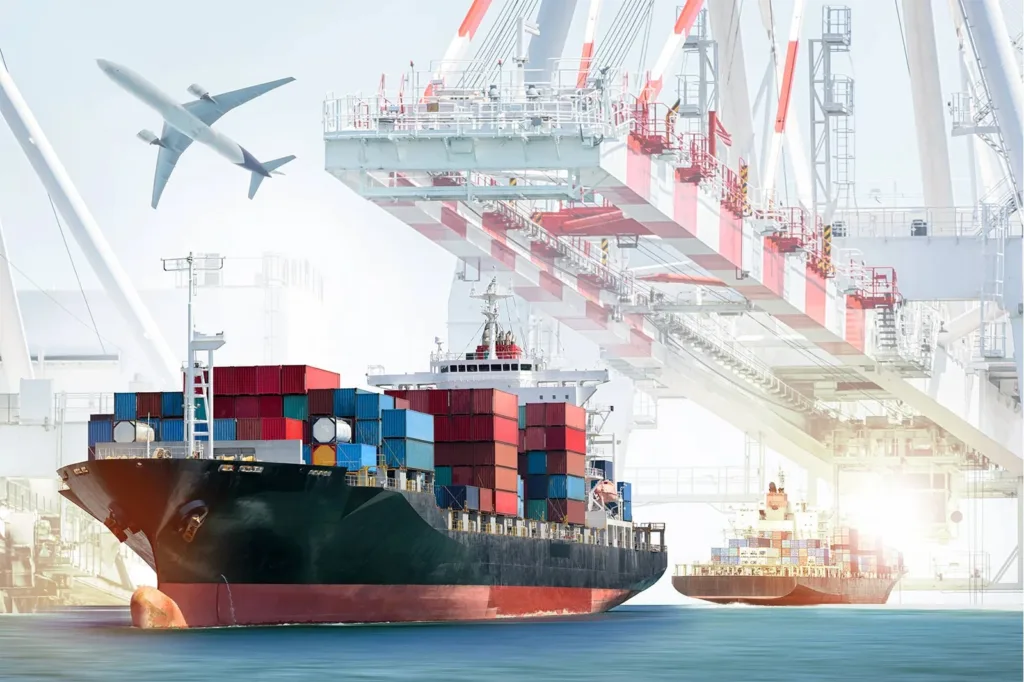What are the customs clearance processes and procedures in Japan? This article compiles the following materials for reference by enterprises.
Import Customs Clearance Procedures and Procedures for Ordinary Ships and Container Ships
Transportation into Bonded Area
After unloading, it is generally necessary to first transport to the port bonded zone or other location designated by the customs chief. After completing the customs clearance procedures, paying import tariffs, and obtaining import permits, the goods can be extracted.
When goods are transported into various bonded areas, an application for import approval must be submitted to the customs. But if it is allowed to inspect goods in the cargo hold or on the barge, the import declaration does not need to be processed within the bonded zone.
The bulk cargo (full container load) of container cargo must be stored entirely in the Container Yard, while the small parcels (less than container load) must be stored entirely in the Container Freight Station. The storage location of ordinary cargo ships can be determined by the importer themselves. Usually, it is temporarily placed in a bonded shed, and when it needs to be stored for a long time, a bonded warehouse can be used.
If the imported goods are not suitable or cannot enter the bonded zone, the customs may also allow them to be stored in other designated locations, but various regulations regarding the bonded zone shall apply.
Import Declaration
After the goods are transported into the bonded zone or other designated locations, the importer shall submit the following documents to the customs director for customs duty payment declaration.
Three copies of the Import Tax Declaration Form
Attachment:
2 copies of commercial invoice (1 copy without foreign exchange import payment);
Packaging specification book and weight certificate;
Freight statement and insurance statement (when the import price is not CIF);
Certificate of Origin, Inspection Certificate, etc;
4 sets of customs duty payment certificates and 1 set of consumption tax payment certificates;
Import approval certificate (for goods that require approval) or prior confirmation letter (for goods that require prior confirmation);
Other permits, approval documents, etc. required by relevant laws and regulations;
Relevant tax exemption documents.
If the importer does not receive the shipping documents and the commercial invoice signed by the exporter during the import declaration, the importer must create a Pro forma Invoice and sign it. After obtaining bank approval, it should be submitted to the customs to obtain the import permit and pick up the goods. After obtaining the commercial invoice from the exporter, the importer is required by customs to make up for it.
Import Inspection
There are three inspection methods based on scope: sampling inspection, partial designated inspection, and full inspection. They are divided into on-site inspection, barge inspection, cargo ship inspection, and inspection site inspection according to location. Imported animals, plants and their products, food, etc. must undergo inspection by quarantine and epidemic prevention departments.
Import License
The customs review the import declaration form and, if necessary, inspect the goods. After verifying the accuracy of the declaration, the customs will return 3 out of the 4 customs duty payment documents to the importer, who will then pay the import tax at the Bank of Japan or its agency (located within the customs). After paying taxes, the importer can obtain the import license and import approval certificate from the customs with the receipt.
After obtaining the import license, the importer takes out the goods from the bonded zone and transports them to their own warehouse. At this point, the importer will attach the import approval certificate returned by the customs with the import quota certificate and submit it to the foreign exchange bank. The foreign exchange bank will then submit the above documents to the Bank of Japan for post inspection. According to regulations, the import license must be kept by the importer for 3 years.
Customs Clearance of Container Ship Cargo
The container yard operator at a Japanese port acts as the agent of the shipping company to submit the “List of Imported Animal Goods” or “List of Plant Goods” to the animal quarantine office or plant epidemic prevention office before the cargo ship enters the port.
After the cargo ship enters the port, it must immediately submit a Cargo Manifest, unloading application, Container List, etc. to customs.
Clearance Venue
The import customs clearance locations for container goods can be container yards, bonded storage yards at ports, or even inland warehouses.
Container Yard Clearance
The importer completes the customs clearance procedures at the container unloading yard, obtains an import permit, and takes away the goods. The customs will compare and inspect the documents submitted by the importer with the imported goods, confirm that they match the declaration and tax payment, stamp the received tax declaration form, and return it to the importer. Importers can use this to pay customs duties at designated locations such as the agency of the Bank of Japan, obtain import permits from customs with tax receipts, and pick up the goods.
Customs Clearance at the Bonded Storage Yard of the Dock
After the container is unloaded from the ship to the container yard, it is transported to the importer’s dedicated bonded storage yard, and then the import customs clearance procedures are processed in the usual way, but the cost is high and the procedures are complex.
Inland Warehouse Clearance
After unloading the imported goods, they are directly transported to the bonded warehouse for customs clearance procedures. This is a special customs clearance method and is generally not used.
Due to the fact that the goods have not yet completed import declaration during transportation in mainland Japan, they belong to bonded logistics transportation. Therefore, importers who use this method of customs clearance must submit a Foreign Goods Transport Declaration to the customs in advance.

